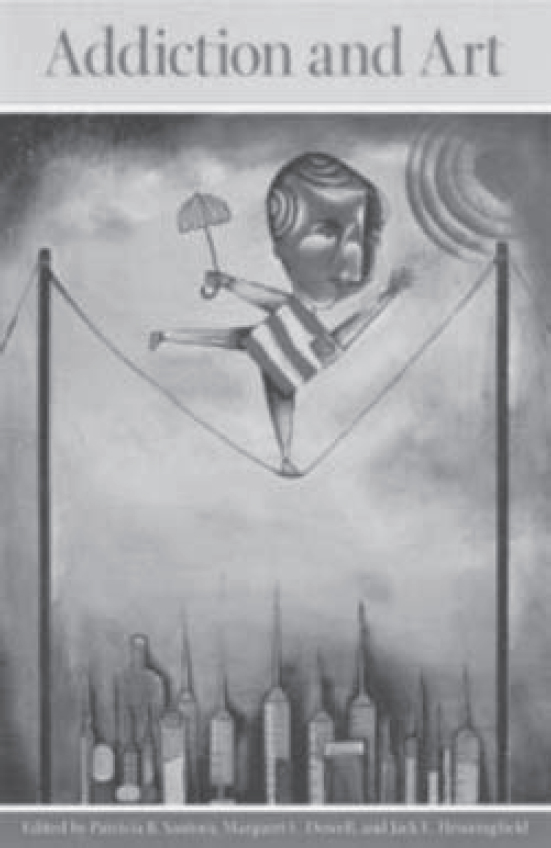
As the ‘High Society’ exhibition at the Wellcome Collection in London has shown, there is widespread interest in the influence of alcohol and drugs on our culture. If one examines Mike Jay’s lavishly illustrated book of the exhibition, Reference Jay1 it can be seen that drug use has a multifaceted relationship with the worlds of art and literature. Much of the artwork is celebratory and indicative of the initial lure of mind-altering substances. If Jay’s book presents us with the intoxication of a Saturday night, then Addiction and Art gives us the hangover of a Sunday morning, multiplied many times over by the enslavement of addiction.
The 61 stark images included in this book were selected by an expert panel from a much larger pool of work, to give insight into the desperation wrought by addictive disorders and to increase public understanding of these disorders. A further purpose was to give hope for recovery, as many of the artists are themselves recovering from addiction. Some of these images appear to be a warning to the sober self as to where a return to drug use might lead. The hopeful images contrast poignantly with those commemorating people who have died through illness, overdose or suicide. I found the painting entitled The Addiction Savior,by a Baltimore funeral director, particularly striking as a response to the epidemic of premature death wrought by tobacco, alcohol and other drugs.
Each image is complemented by explanatory text from the artist on an opposing page. These pieces then are deeply personal and give insight into a variety of individual hells. In comparison with, say, William Hogarth’s Gin Lane or George Cruikshank’s The Worship of Bacchus, there appears to be a lack of awareness of the social causes of the problems that are depicted. This book is very much influenced by the prevailing disease-model ideology of addictions in the USA, based on an emphasis on neurobiology at the expense of psychological and social understandings of addiction. I found myself doubting the claim put forward by the editors that science and art are reconciled here, with the art giving us the wide variety of personal experience that lies beneath the seemingly uniform surface of addictive disorders.
Ultimately, this is a worthwhile book, not only for the many striking images it presents, but also for showing how an involvement with art might for some prove therapeutic. The book does not stand alone and the project from which it is taken (www.addictionandart.org) appears to continue to thrive.



eLetters
No eLetters have been published for this article.